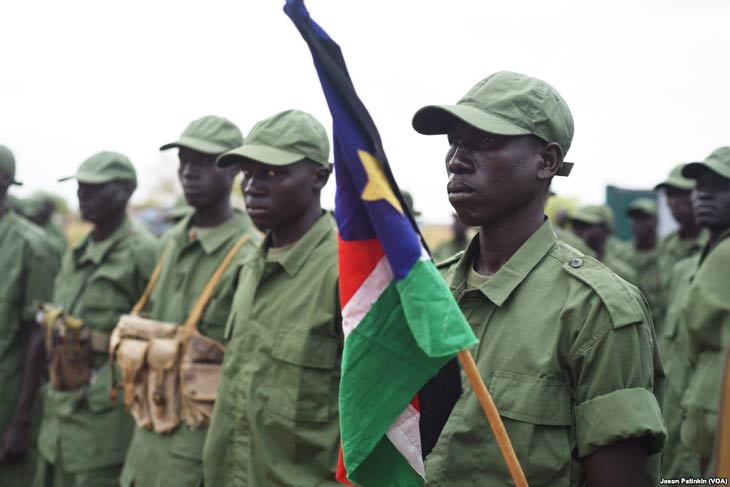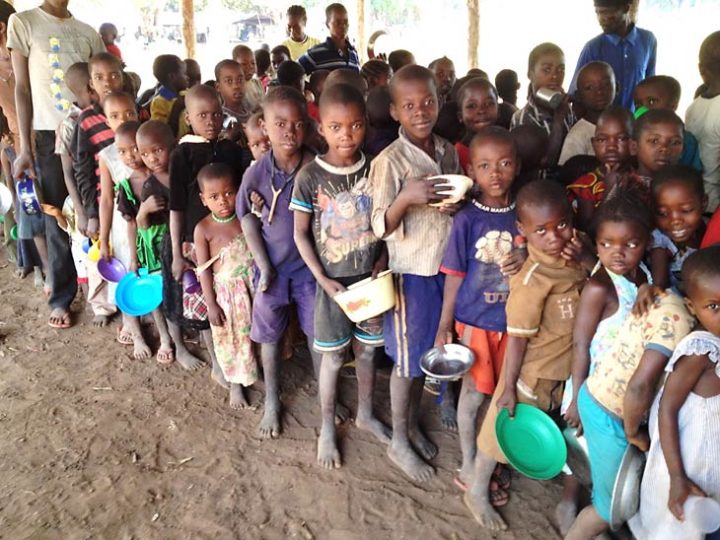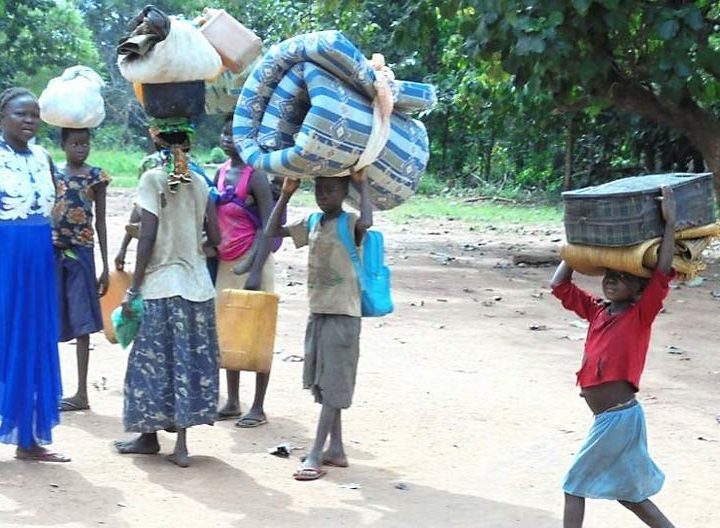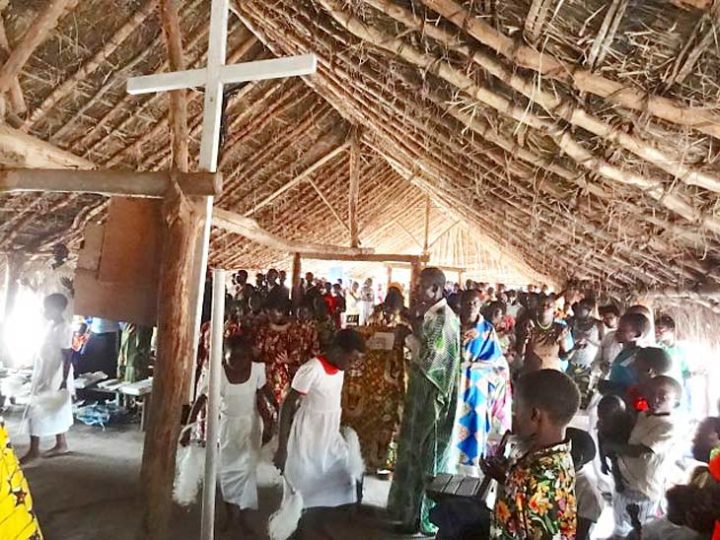
8 Questions About Battle Between Sudan People’s Liberation Movement-in-Opposition (SPLA-IO) and Government
RADIO TAMAZUJ (11 Jul.)
The last five days have seen the heaviest fighting in Juba since the war began. Radio Tamazuj answers your questions to help understand the developing situation.
- What happened in the lead up to the fighting?
There has been high tension in Juba since the return of the SPLA-IO to the city, part of a peace deal meant to force the two sides to work together. The government was unhappy about the return of the SPLA-IO after the IO was beaten militarily in many parts of the country. Meanwhile, the SPLA-IO were bitter and disappointed with the government forces’ perpetual harassment and intimidation of them whenever they met in the city. Tension increased as security arrangements to set up joint patrols stalled and as government security forces began killing SPLA-IO members, including George Gismalla, which fueled feelings for payback. The two sides were waiting for a trigger.
That trigger came Thursday when the government suddenly set up checkpoints around the city. Ostensibly, these were to keep peace during Eid and check cars with tinted windows. However, soldiers manning these checkpoints were reportedly very aggressive. Several IO members, including one senior official, reported being detained a long period of time at checkpoints. In the evening, things deteriorated. A group of government soldiers at a checkpoint fired on a convoy of US embassy vehicles. The country representative of UNESCO was also shot. At around 8 pm, a group of SPLA-IO soldiers approached a checkpoint at Lou Clinic in Gudele. Both sides blamed each other for firing the first shot, but by the end of it five government soldiers were dead and two wounded, while two SPLA-IO soldiers were wounded. The next day, after the two sides retreated to their camps, Juba was primed to explode.
- How did the fighting on Friday start?
On Friday late afternoon, Kiir, Machar, and vice president James Wani Igga met at the presidential compound J1. Kiir was to address the nation on the eve of South Sudan’s independence anniversary. Government spokesperson Michael Makuei, in J1 at the time, has claimed SPLA chief of general staff Paul Malong and senior SPLA-IO general James Koang were also in attendance.
In the early evening before the sunset, heavy gunfire and artillery broke out outside J1, lasting about an hour. The fighting spread around the city. As the shooting was ongoing outside J1, Kiir, Machar, and Wani made public statements urging calm and claiming they did not know the cause of the clashes. Hundreds of soldiers were killed outside J1; the palace stained with blood. So few of Machar’s bodyguards were left alive that Kiir gave some of his own troops to escort the first vice president back to his base in Gudele.
Several military sources speaking to Radio Tamazuj described the J1 clashes as a well-arranged and pre-planned retaliation for the killing of the five SPLA soldiers at Gudule. According to one military intelligence senior officer, under command of Malong: “I think they have learned a lesson now and I don’t think they [SPLA-IO] will try it again if they are humans after this incident.”
The officer added: “When they [SPLA-IO] came here [Juba] it was not because they were strong enough to enter Juba. They came because there was a peace agreement and if they now think they came because they are powerful, then they are wrong.”
A leaked UN memo published by Inner City Press said: “A huge force came from nowhere and joined up with President Kiir’s tiger force and opened fire on Machar’s bodyguards deployed outside the Palace for protection.”
Makuei, the government spokesperson, claimed the shooting at Lou Clinic checkpoint and J1 was the fault of an SPLA-IO lieutenant colonel killed at J1. Makuei has yet to name this person or produce the body. Meanwhile, accounts from journalists inside the compound described bullets directed at the palace itself, indiscriminately hitting many buildings and offices including the different buildings where the journalists and the three members of the presidency were staying. One thing that is clear is there was no attempted arrest of Machar, which Machar’s spokesperson, James Gatdet Dak, who lives in Kenya, reported on Facebook, but later deleted.
- What about Sunday and Monday?
After a tense Saturday, fighting restarted on Sunday and continued Monday, affecting Hai Cinema, Hai Amarat, Malakia, Tongpiny, Gudele, Jebel, Munuki, and along Bilpham road. Over 10,000 civilians were displaced. UN bases in Tongpiny and Jebel were hit by bullets or artillery. Government troops apparently deliberately shelled the Jebel base home to 30,000 Nuer people.
The instigator in these instances is debatable. There were reports of government troops ordering civilians to leave certain neighborhoods before clashes. This could be evidence the government was planning to attack in the area, or as a precaution to avoid civilian casualties, or both. Government spokesperson Lul Ruai Koang said the army did not know the cause of the clashes. Other ministry of defense figures likewise seemed in the dark.
But government spokesperson Michael Makuei said during the fighting that the situation was under their control. It is not clear if this was simply meant to assure people that things are safe in the capital, or if it was a declaration of his side winning militarily. Indeed, the SPLA mobilized most of its most powerful and valuable military assets, including tanks and attack helicopters, to bombard the SPLA-IO. The SPLA-IO has consistently claimed that government forces attacked them.
The fighting devastated the SPLA-IO forces. Over 100 were killed on the first day alone. They were only allowed 1410 soldiers in the capital according to the peace deal, and this limit was strictly monitored. They were also allowed no heavy weapons, carrying only AK-47s, light machine guns, and rocket-propelled grenades. Meanwhile, the government never complied with its troop limit of 3420 troops, had cantonment sites circling the city, and deployed their most powerful artillery against the smaller IO force.
- Who controls Juba?
Per terms of the peace agreement, both SPLA and SPLA-IO forces are in Juba. Before the latest clashes, the SPLA-IO could move around, but were dominant only in their bases in Gudele and Jebel. The rest of the city was de facto controlled by Kiir’s side. Most of the fighting has concentrated in the two areas where SPLA-IO is based. At no point did the SPLA-IO march on the center of Juba town, as was variously claimed. By Sunday, the SPLA-IO said government troops had overrun their base in Jebel. Shortly after, Kiir announced a unilateral ceasefire. In the ceasefire statement, Kiir ordered troops to maintain checkpoints at key installations and protect any SPLA-IO member who surrendered. Celebratory gunfire was heard throughout the city.
However, reports of fighting in Hai Cinema, Malakia, Tongpiny, Munuki, Bilpham road and elsewhere suggest these areas may have been contested as well, or have presence of some other opposition groups. It is unclear who the government would fight in such places, though there are reports of defections within government ranks, including SPLA Major General Charles Lam.
- Has there been targeting of civilians?
At least dozens of civilians were killed or injured in crossfire, but there have been no verified reports of door-to-door searches and executions, as took place during the 2013 Juba Massacre. However, government soldiers prevented civilians from reaching the relative safety of UN bases. One witness in the UN Jebel base told Radio Tamazuj of an incident around 4 pm Monday when soldiers at a checkpoint forced a man to sit down and shot him dead. Witnesses also described deliberate shelling of the base, causing many civilian casualties. Nearly every military engagement in South Sudan’s civil war involved targeting of civilians, often more than targeting combatants, so it’s possible more reports of targeted killings of civilians emerge. Radio Tamazuj will continue to monitor and report on abuses against civilians and violations of international law.
- Is the fighting only in Juba?
There has been violence reported in Wau, Torit, Bentiu, Lainya, and Kajo Keji. So far none of it is confirmed to have been coordinated with the violence in Juba, though in most cases it involves at least one of the two parties to the conflict in Juba: the national army SPLA. There remains a great risk of fighting escalating in other parts of the country.
- How is the international community responding?
The international community had taken little meaningful action to stop the fighting. IGAD, which pushed through the peace deal, has been silent. So have regional heads of state besides Sudan’s Omar al-Bashir, who called on Kiir and Machar for restraint. The peace monitoring body JMEC, headed by Botwana’s former president, did not call for a ceasefire until Monday, more than two days after the clashes in Juba broke out. The African Union condemned the violence. The UN Security Council met Sunday but did not vote on an arms embargo, though Secretary General Ban Ki Moon on Monday called for such an embargo.
Instead, the council requested additional troops for UNMISS, the peacekeeping mission, though it’s unclear when these troops would be ready. UNMISS itself has done little patrolling outside its bases in Juba and has rarely confronted the warring parties during the war to prevent fighting or to protect civilians outside. At times, their forces have even been unable to protect civilians at UN bases in Juba, with dozens of civilian wounded reported from the protection sites. There are reports of peacekeepers running away on Monday when the base came under attack. It is therefore unlikely more troops will make a difference if the mission does not reorient itself politically and militarily.
- Is South Sudan at risk of sliding back into civil war?
South Sudan is at civil war. Serious hostilities did not end with any of the many ceasefires signed since January 2014, nor with the formation of a unity government. While some areas of the country are more affected by violence than others, war and its consequences are very much a part of life for millions of South Sudanese citizens today.




